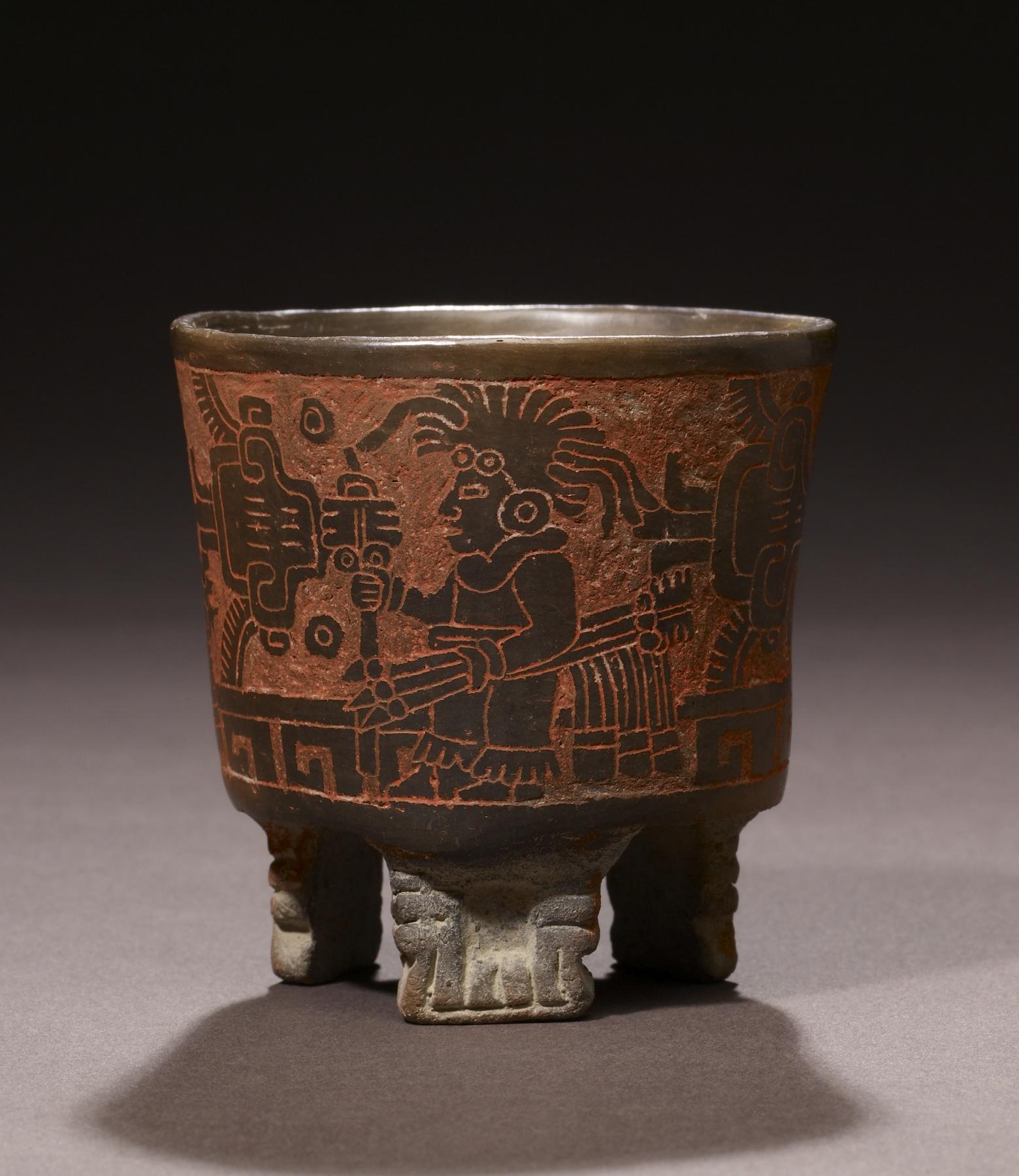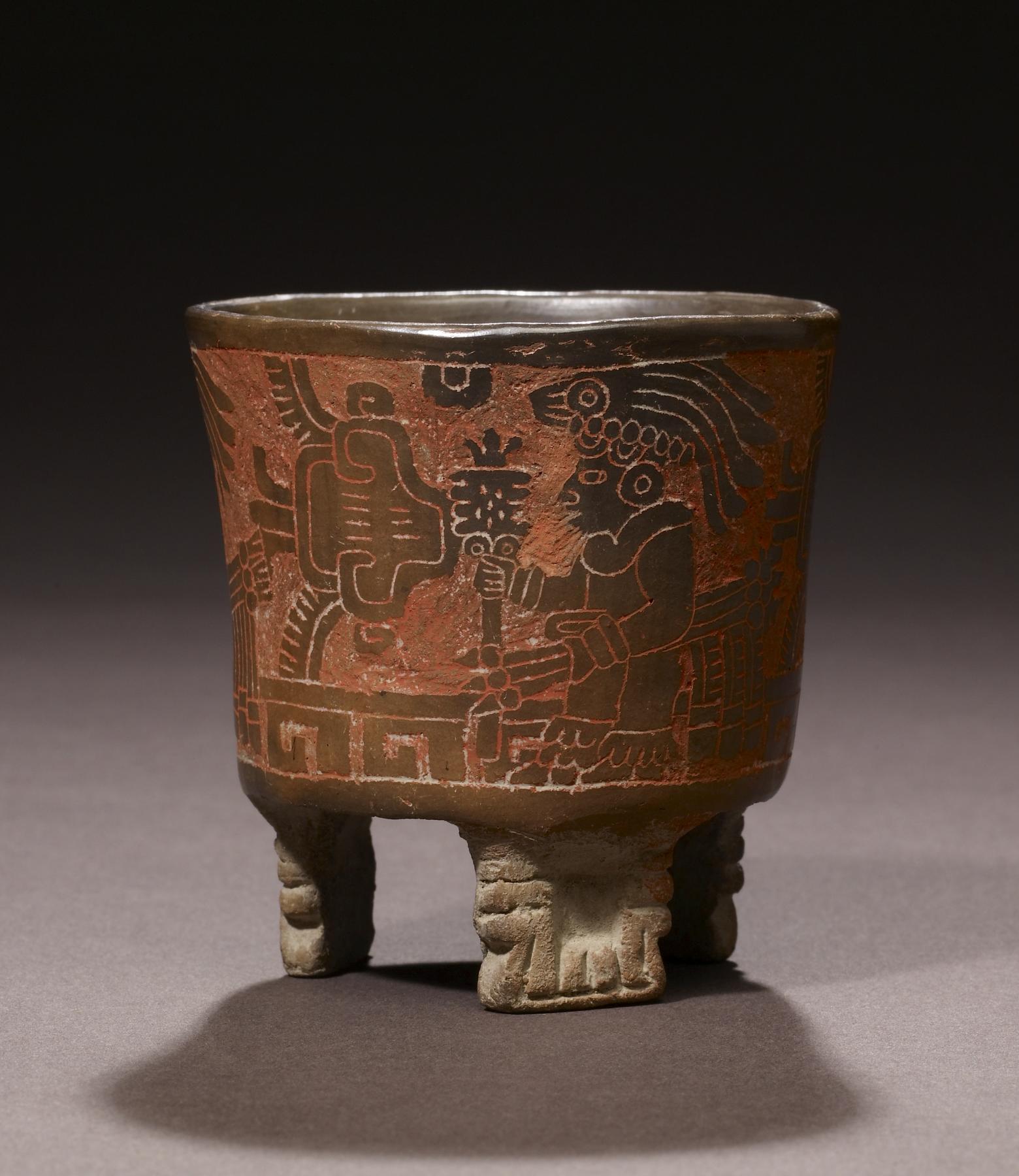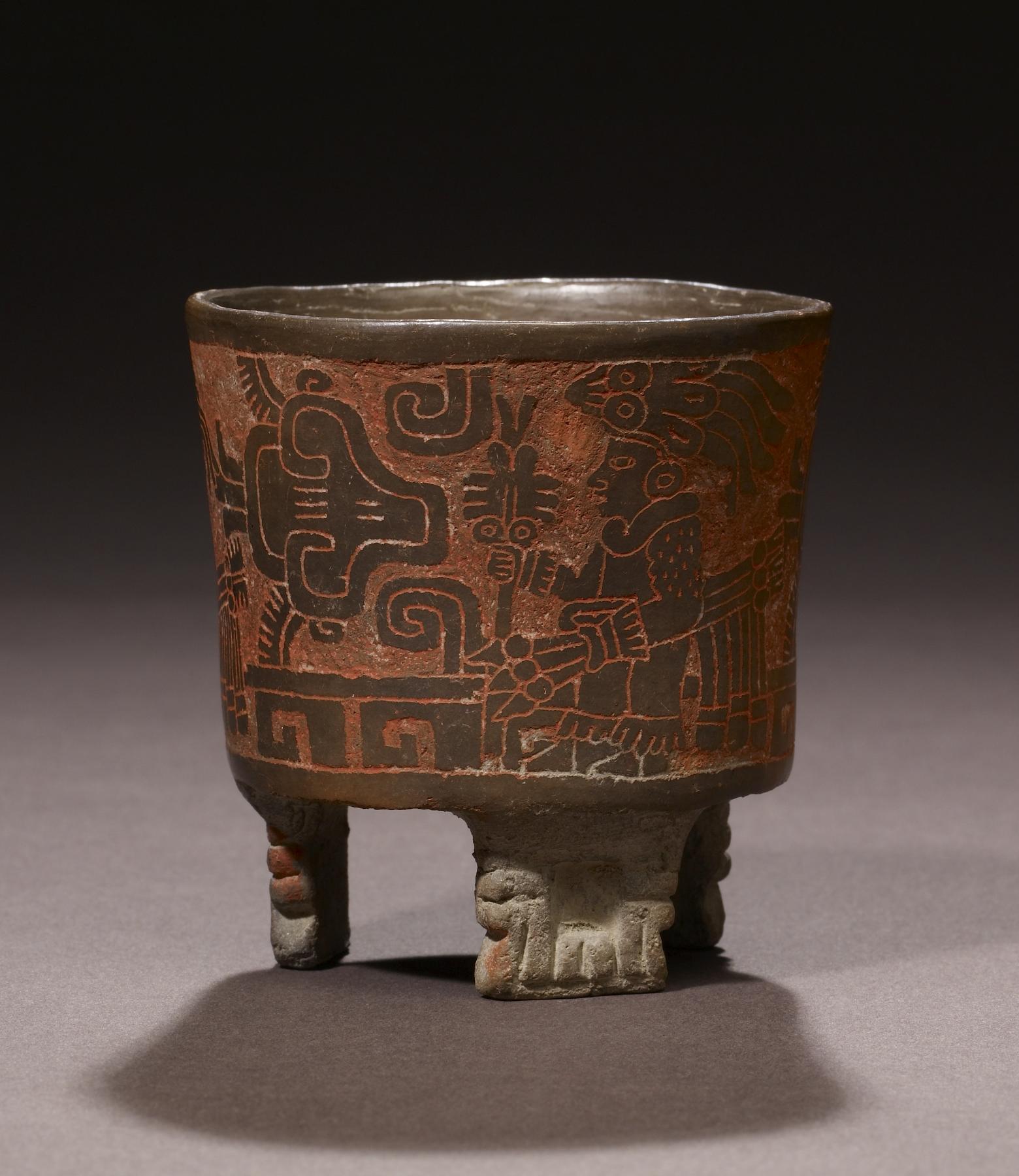Tripod Vessel
(Ancient Americas )
The tripod dish is a vessel form intimately associated with Teotihuacan, the most powerful political force during Mesoamerica's Classic Period (100-900 CE). Expanding from its capital, named "Teotihuacan" (Place of the Gods) by the Aztecs nearly a thousand years later, Teotihuacan's influence spread east and west from coast to coast in central Mexico and south into the Maya regions of Guatemala and Honduras, reaching into northwestern Costa Rica in Central America. Each of these paired tiny tripod dishes is decorated with a procession of Teotihuacan warriors, carrying the spear thrower and long darts of its military orders. Their costumes include the double-ring eye or head adornment (TL.2009.20.98) and butterfly headdress (TL.2009.20.99) often worn by members of the martial forces. There are iconographic anomalies on both vessels, however, notable in such elements as the headdresses and large emblems separating the figures, which bring into question the origin of the incised narrative.
Provenance
Provenance (from the French provenir, 'to come from/forth') is the chronology of the ownership, custody, or location of a historical object. Learn more about provenance at the Walters.
Private collection, Santa Fe, New Mexico. Ron Messick Fine Arts, Santa Fe, New Mexico; purchased by John G. Bourne, Santa Fe, New Mexico, 1999; given to Walters Art Museum, 2013.
Exhibitions
| 2012-2013 | Exploring Art of the Ancient Americas: The John Bourne Collection Gift. The Walters Art Museum, Baltimore; Frist Center for the Visual Arts, Nashville. |
Conservation
| Date | Description | Narrative |
|---|---|---|
| 1/1/2011 | Examination | Certain elements of the vessels’ imagery are uncharacteristic of Teotihuacan art, especially the figures’ headdresses and the large motifs separating the figures, so we looked more closely at them. Technical analysis indicates both vessels are similarly constructed and are in excellent condition. The imagery was incised into the surface after the slip paint was applied and before the vessels were fired. After firing, a red, iron-based paint was rubbed into the surface to highlight the incised decoration. The similarity in slip and pigment analyses indicates that the two vessels were certainly made at the same time and place but cannot establish the date of manufacture. |
Geographies
Mexico (Teotihuacan) (Place of Origin)
Measurements
H: 2 13/16 x Diam: 2 13/16 in. (7.2 x 7.1 cm)
Credit Line
Gift of John G. Bourne, 2013
Location in Museum
Not on view
Accession Number
In libraries, galleries, museums, and archives, an accession number is a unique identifier assigned to each object in the collection.
In libraries, galleries, museums, and archives, an accession number is a unique identifier assigned to each object in the collection.
2009.20.98









